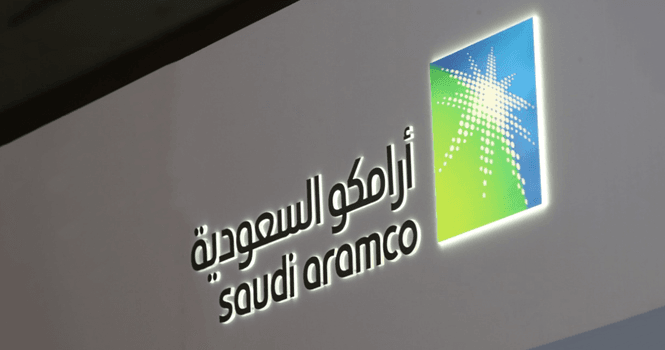Insights from Aramco Exec: Energy Source Integration Objectives to Meet International Search Records

In a world increasingly driven by the challenges of climate change, energy security, and technological evolution, the integration of diverse energy sources has emerged as a prominent goal for the future. This article dives deep into the objectives set forth regarding energy source integration as articulated by executives at Aramco, one of the leading global energy companies. Emphasizing its unique features, benefits, and the substantial value it adds to the energy landscape, this discussion seeks to illuminate new insights into energy source integration.
Understanding Energy Source Integration
Energy source integration refers to the systematic incorporation of various energy sources—renewable, fossil, and nuclear—into a cohesive energy system. This integration not only aims to diversify energy sources but also to create resilient systems capable of meeting expanding global energy demands. With particular reference to insight from Aramco executives, we’ll explore how this integration is central to achieving international energy objectives.
Unique Features of Energy Source Integration
Here are some of the standout features of energy source integration that Aramco emphasizes:
- Diversity of Energy Sources: Utilizing a mix of energy sources ranging from solar, wind, and hydro to gas and oil creates a robust energy portfolio.
- Technological Innovation: Advancements in technology streamline the integration process, making it more efficient and reliable.
- Smart Grid Initiatives: Implementing smart grid technology ensures real-time data management, energy distribution, and peak load management, facilitating effective energy source integration.
- Energy Storage Solutions: Energy storage is a key component, allowing for the management of supply and demand fluctuations, thereby optimizing energy distribution.
The Benefits of Energy Source Integration
Integrating various energy sources presents numerous benefits, both for companies like Aramco and the wider energy sector. Here are critical advantages:
- Enhanced Energy Security: By diversifying energy sources, countries can reduce their vulnerability to market fluctuations and geopolitical tensions.
- Reduced Environmental Impact: Integrating renewables helps lower carbon emissions, contributing to global sustainability goals while still leveraging traditional energy sources.
- Economic Resilience: A diversified energy portfolio can stabilize prices and create job opportunities across various sectors and technologies.
- Regulatory Compliance: Adapting to stricter environmental regulations becomes feasible, aligning corporate strategies with global sustainability practices.
Value Proposition of Integration Objectives
When viewed through the lens of Aramco’s initiatives, the integration of energy sources takes on new dimensions of value. The value proposition includes:
- Corporate Responsibility: Addressing environmental concerns and contributing positively to global sustainability resonates with both consumers and investors.
- Investment Attraction: Companies that prioritize energy source integration are better positioned to attract investments, as stakeholders increasingly view sustainability as a criterion for investment decisions.
- Global Leadership: As a major player in the energy market, Aramco’s adoption of comprehensive integration objectives sets an industry standard and positions it as a leader in the global push toward sustainable energy.
Expert Insights on Energy Source Integration
In examining the evolving landscape of energy source integration, industry experts note that one of the biggest hurdles remains the legacy systems resistant to rapid change. The shift from conventional energy to a more diversified approach necessitates not only technological advancements but also a cultural transformation within the energy sector.
Dr. Helen Thompson, a leading energy analyst, notes that “alignment between government policies and corporate strategies is critical to the success of energy source integration. Without a collaborative approach, companies will struggle to navigate the complexities of modern energy landscapes.”
Moreover, the role of education in fostering a workforce adept at handling integrated energy systems cannot be overstated. Educational institutions must pivot to curricula that emphasize renewable technologies, energy management, and data analysis—a trend Aramco is already noticing in its collaborative partnerships with universities.
A Path Forward: Navigating Challenges
While the benefits of energy source integration are clear, the journey is fraught with challenges:
- Regulatory Barriers: Shifting from traditional energy frameworks often entails navigating complex regulations that can impede progress.
- Technological Gaps: The pace of innovation can sometimes outstrip the pace of regulatory and market adaptation.
- Cultural Resistance: Change-resistant mindsets within organizations may slow down the adoption of integrated energy strategies.
To overcome these challenges, the following strategies can be effective:
- Policy Advocacy: Engaging with governments to advocate for supportive policies can help streamline regulatory landscapes.
- Cross-Sector Collaboration: Partnering with technology firms and educational institutions can accelerate adoption rates of innovative solutions.
- Employee Engagement: Involving employees in the transition process ensures that the workforce is equipped and motivated to embrace new practices and technologies.
Conclusion: The Future of Energy Source Integration
As Aramco and similar companies pursue energy source integration objectives to meet international search records, it is imperative to adopt a holistic approach that encompasses innovation, strategy, policy, and education. This endeavor not only seeks to enhance corporate resilience and responsibility but also aims to establish systems capable of thriving amidst the complexities of the global energy landscape.
In summary, energy source integration is more than a strategic objective—it is a commitment to shaping the future of energy in a way that is responsible, sustainable, and economically viable.
For more insights and analyses on energy topics and beyond, visit our BizTechLive News article catalog.
Additional Resources
- International Energy Agency – Energy Integration
- World Economic Forum – Future of Energy
- U.S. Department of Energy – Energy Storage
Engage with the evolving dialogue surrounding energy source integration today—forward-thinking actions today can set the stage for sustainable energy solutions for tomorrow.






